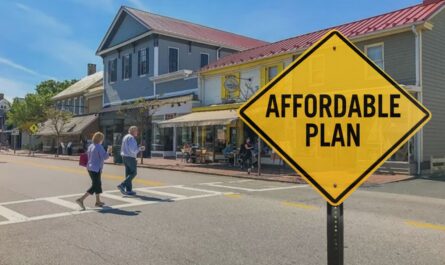New York, NY – U.S. corporate profits are soaring to new heights in 2025, with the stock market hitting record levels. However, this financial upswing masks a startling trend: nearly 1 million jobs have been cut this year, the highest since the pandemic year of 2020. Economists describe this paradox as a “jobless boom,” where companies enjoy booming earnings while simultaneously reducing their workforce.
Experts point to the rapid integration of artificial intelligence (AI) across industries as the primary driver behind this unusual disconnect. AI-powered productivity gains are enabling companies to operate more efficiently, reducing the need for human labor even as revenues climb.
Understanding the Jobless Boom Phenomenon
Chen Zhao, chief global strategist at Alpine Macro, calls this situation unprecedented. Historically, layoffs intensify when profits dip and companies need to cut costs. Yet, Zhao notes the alarming example of Amazon laying off 30,000 employees despite its profits performing exceptionally well.
“We’ve never seen anything like that. It’s completely different from a historical playbook,” Zhao told CBS News.
The widespread adoption of AI has fueled a significant increase in business productivity but suppressed labor demand. Zhao explains that the labor demand growth has flattened near zero or even experienced slight contractions, despite the healthy economy.
- Corporate profits are climbing, benefiting investors and shareholders.
- Layoffs have risen sharply, nearing 1 million cuts this year.
- AI is accelerating productivity across multiple sectors beyond just technology.
- The job market dynamics reflect a stagnant labor demand combined with shrinking labor supply.
Labor Market Shifts and Economic Impact
For most of 2025, the labor market was described as “no hire, no fire,” signaling job stability amid cooling hiring activity. However, recent data from payroll processor ADP shows muted job growth, with just 42,000 private sector jobs added in October — a modest rebound after weak months.
Bill Adams, chief economist at Comerica Bank, stated, “Employment is stagnating in the fall… overall employment was likely about flat after accounting for federal layoffs.”
The official U.S. unemployment rate held steady at 4.3% in August, despite rising layoffs and slower hiring. This stability is partly due to a shrinking labor pool, influenced by retiring baby boomers and reduced immigration.
Experts highlight this unusual labor market equilibrium where both labor demand and labor supply are not growing, creating a complex economic environment. Zhao noted,
“You basically have a labor demand that is going nowhere, and labor supply going nowhere, too. So that creates a very odd equilibrium.”
Diverging Perspectives on Layoffs and AI’s Role
Not all agree that AI is the primary cause of layoffs. Art Pappas, CEO of Bullhorn, argues that companies are recalibrating their workforce after pandemic overexpansion. According to Pappas, the easier availability of talent now encourages firms to trim their workforce.
“These companies announce layoffs and their stock goes up — it’s a perverse incentive to announce layoffs,” said Pappas.
Read Also: Texas Nurse Larissa Gonzalez Transforms Career After Son’s 31-Day NICU Journey
Pappas also challenges the idea that AI is directly replacing jobs, suggesting instead that AI-related layoffs might signal a broader trend of reduced hiring, especially for entry-level positions which traditionally absorb the majority of new labor market entrants.
Looking Ahead: What This Means for Workers and Businesses
This evolving “jobless boom” presents both opportunities and challenges. While businesses benefit from AI-driven efficiency and higher profits, workers face uncertainty with fewer available jobs and shifts in hiring practices.
For further context and insights, visit the original report on CBS News.
Key takeaways:
- Expect increased AI adoption to continue reshaping labor needs.
- Workers may encounter growing competition and fewer entry-level roles.
- Policymakers and businesses must balance innovation-driven productivity with workforce impacts.
What do you think about this jobless boom fueled by AI and soaring profits? Share your thoughts in the comments below!


 by
by 

